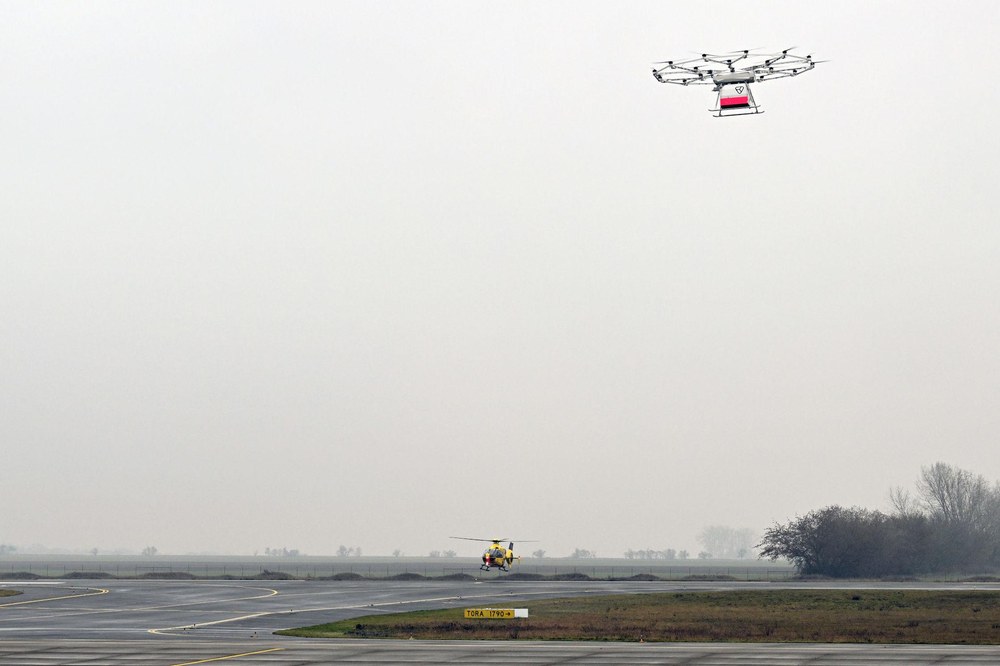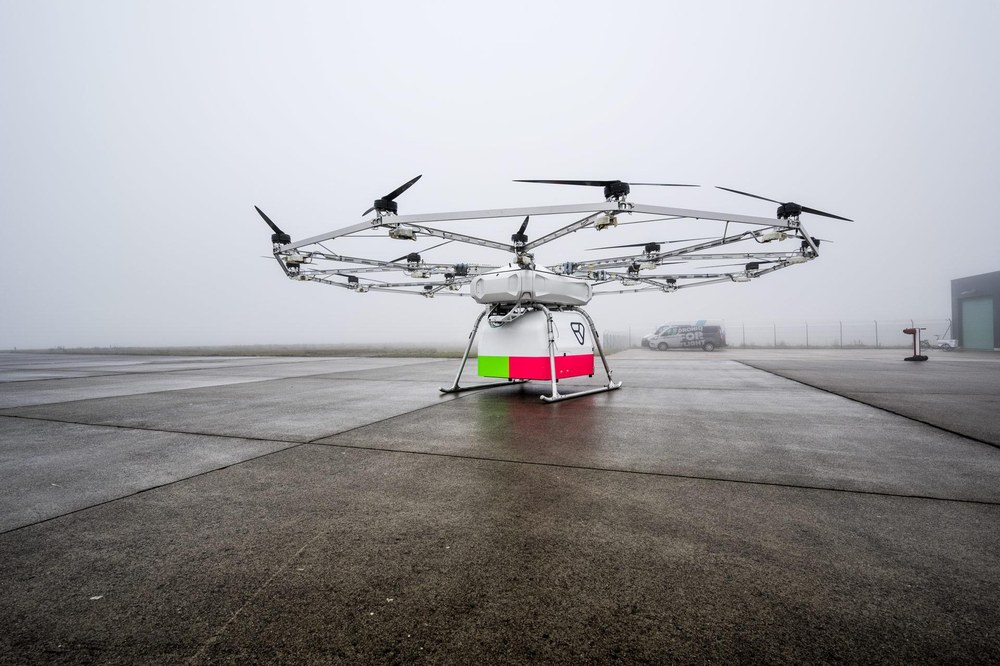Deconfliction of uncrewed and crewed aircraft tested at Magdeburg-Cochstedt Airport



- In the future, a highly automated system will be required for the operation of a large number of uncrewed aerial vehicles, which will complement classic air traffic control.
- The flight tests in Cochstedt simulated an air taxi scenario for the connection between the city centre and the major airports within the metropolitan regions of London and Frankfurt/Main.
- The flight tests in Cochstedt with the VoloDrone focused on possible contingency manoeuvres on typical flight routes in urban environments
- Focus: Aeronautics, uncrewed aviation
Drones and drone technology will change our everyday lives. They may soon be more visible in the skies, ranging from delivery drones to air taxis. But in order for drone flights to become a part of everyday life in the coming decades, clearly defined regulations, flight corridors, and safe air traffic management (ATM) for new airspace users are needed. After all, conventional air traffic and future uncrewed aircraft must operate smoothly and reliably side by side in a safe manner. Flight tests are essential for designing and testing realistic unmanned aircraft system traffic management (UTM) for uncrewed air transport. To this end, a series of large-scale demonstrations (VLDs) have taken place throughout the year within the framework of the EU project CORUS-XUAM. For the first time, Volocopter's VoloDrone flew at the National Test Center for Unmanned Aerial Systems of the German Aerospace Center (Deutsches Zentrum für Luft- und Raumfahrt; DLR). At Magdeburg-Cochstedt Airport, the focus was on contingency management in the event of unforeseen conflict scenarios. The tests flew two scenarios for urban areas in London and Frankfurt/Main. On 30 November 2022, the multi-national cooperating research team of DFS Deutsche Flugsicherung GmbH, DLR, Droniq, NATS and Volocopter presented the flight tests to the guests.
"DLR’s National Experimental Test Center for Unmanned Aircraft Systems in Cochstedt is a unique real-life laboratory for testing all technologies related to the use of unmanned aerial vehicles. In order to test the integration of unmanned air traffic into regular flight operations, we provide our customers and partners from research, industry as well as public authorities with extensive research facilities for testing new air traffic concepts," says Anke Kaysser-Pyzalla, Chair of the DLR Executive Board. "International research projects like CORUS-XUAM bring together key stakeholders. Together, we are working to establish sustainable air traffic management for unmanned aerial vehicles with the U-space vision. In this way, we are consolidating Germany's and Europe's international pioneering role for these new aviation technologies. Flight tests and the framework conditions created for this in Cochstedt are an important step towards this."
Up until now, air traffic control in conventional air traffic has been largely based on VHF radio communication between pilots and air traffic controllers. In the future, the operation of an unprecedented number of uncrewed aircraft will require a highly digital and automated system that complements traditional air traffic control systems. To achieve this, the U-space concept is currently being developed throughout Europe. In the future, drone flights are to operate in U-space airspace – from take-off, flight, and landing. In case of unforeseen traffic, like an EMS helicopter, the selected route for the air taxi gets updated through the digital interface and the flight diverted.
Automated flight guidance with avoidance procedures
The flight tests in Cochstedt simulated an air taxi scenario for the connection between the city centre and the major airports within the metropolitan regions of London and Frankfurt/Main. An ADAC EMS helicopter was used as an example of a prioritised Emergency Medical Services (EMS) aircraft in one of the scenarios. In the scenarios, the flight request, flight planning and flight execution from take-off to landing were remotely piloted/automated. It focused on the digital communication interface for ATM/UTM, including contingency management in the event of unforeseen conflict scenarios, and potential routing and air traffic management solutions.
"In the CORUS-XUAM flight tests in Cochstedt, we are taking on the detailed task of providing a U-space service that can detect and resolve route conflicts of an air taxi both in the planning phase and during flight," explains Karolin Schweiger from the DLR Institute of Flight Guidance. "This ensures that the air taxi can safely interact with spontaneously appearing and unpredictable traffic participants such as rescue helicopters even while in the air."
Simulated rescue flights
The flight test demonstration at the Cochstedt drone test site showed how the VoloDrone flies scaled-down versions of the flight routes under research. For the Frankfurt scenario, this was the simulated route between Frankfurt Messe and Frankfurt Airport. For the London scenario, this was a potential route between London City Airport and London Heathrow Airport. Suitable locations for vertiports, take-off and landing sites for future air taxis were determined for both scenarios. The demonstration at the test site in Cochstedt with the VoloDrone focused on possible contingency manoeuvres on typical flight routes in urban environments. Exemplary here are EMS flights that are given priority: this was clearly demonstrated in the flight tests with an ADAC EMS helicopter in the Germany use case, where the VoloDrone automatically adjusted its flight path to avoid the EMS helicopter. In the UK use case, the research teams tested how reducing the speed of the VoloDrone could be used to maintain separation with commercial air traffic, or to give more time to carry out ground operations at the destination vertiport in preparation for arrival. The VoloDrone is being developed by Volocopter to deliver up to 200 kilograms of cargo in an all-electric flight at a distance of up to 40 kilometres.
Related links
The EU research project CORUS-XUAM
Overall, the flight tests in Cochstedt are part of a whole series of flight tests within the framework of the EU project CORUS-XUAM . Prior to this, large-scale demonstrations took place in Spain, Italy, France, Sweden and Belgium to gain experience with the integration of unmanned aerial vehicles alongside existing air traffic in various urban areas. The results will be incorporated into the further development of the European U-space Operations Concept (CONOPS). Well-established standards and regulations for uncrewed air traffic are urgently needed so that the industry can unfold its great predicted development potential. The research work in the CORUS-XUAM project is funded in the EU research programme SESAR under the number 101017682.
